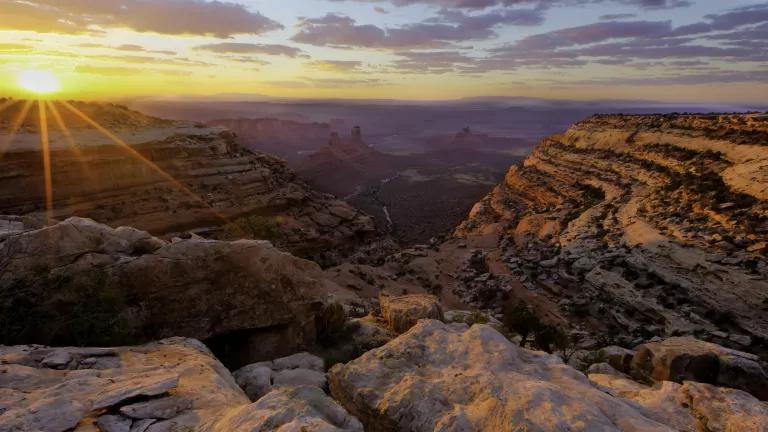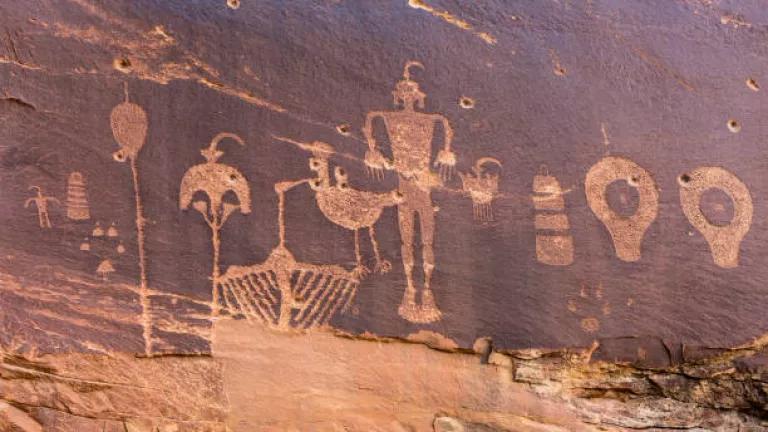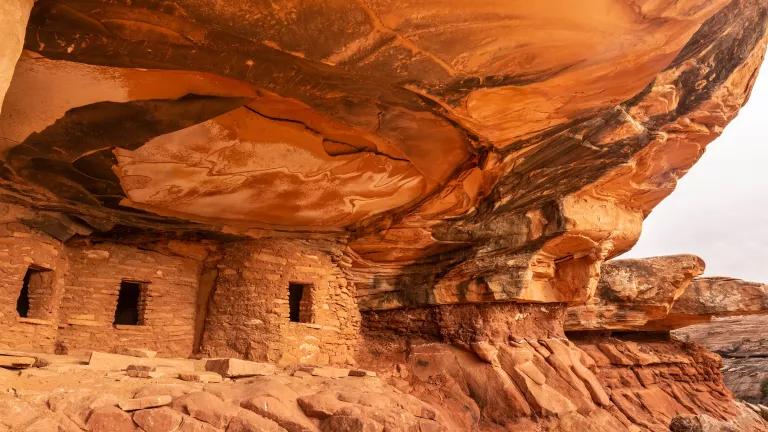Bears Ears: A Monument in Name Only
This newest management plan released by the Bureau of Land Management (BLM) and the U.S. Forest Service (USFS) spells out how the remaining 200,000 acres of the monument will be governed. The changes are so sweeping, what currently is known as the Bears Ears National Monument is rendered a monument in name only.

The Trump administration has issued its final resource management plan for what is left of the Bears Ears National Monument.
As many will recall, in 2017 President Trump signed a proclamation to eliminate 85% of the Bears Ears National Monument, reducing this Utah monument from 1,351,849 acres to a little over 200,000 (split between two disconnected “units”).
This newest management plan released by the Bureau of Land Management (BLM) and the U.S. Forest Service (USFS) spells out how the remaining 200,000 acres of the monument will be governed. The changes are so sweeping, what currently is known as the Bears Ears National Monument is rendered a monument in name only.
These few key management prescriptions from the resource plan make clear that the administration has no intention of managing these lands consistent with what it takes to preserve a national monument:
Wilderness Lands
BLM and the USFS have identified 82,293 acres as lands with wilderness characteristics within the current monument boundaries. Zero of Bears Ears “wilderness” acres will be managed to preserve their wilderness character. It should be noted that 41% of the total Bears Ears planning area that remains contains wilderness quality lands. The practical elimination of management prescriptions to preserve wilderness quality lands is extraordinary.
The View
The BLM acknowledges that at over 80,000 acres of land in the monument qualify for the highest standard of viewshed protection, requiring that management decisions are not made that would degrade the region’s iconic views. But the BLM is committing to manage only 240 acres under the highest BLM standard, or less than .0011% of the total monument.
Culturally Sensitive Resources
The Bears Ears region has some of the most concentrated, well preserved, and significant historical, cultural, and paleontological resources found anywhere on the planet. BLM’s management plan couldn’t care less. It prescribes the following for these critical cultural resources:
Right of Way Development: 65,848 acres with culturally sensitive resources would be open to right of way permits. Such activities as the siting of electrical transmission lines, the buildout of cell and communication towers, and the permitting of pipelines would be allowable. Worse yet, 6,736 of those acres, or 10½ square of miles, have been identified with the highest degree of cultural resource sensitivity.
Mining and Drilling: 78,702 acres, or 39% of culturally sensitive lands in the planning area, would be open to new land use authorizations that could include mining and drilling operations.
Livestock Grazing: 185,937 acres of culturally sensitive lands would be open for grazing. 61,266 of those acres contain the highest degree of cultural resource sensitivity.
Offroad Vehicle Travel: 175,089 acres of culturally sensitive resources would be available for potential offroad vehicle travel, or 87% of the monument. 61,593 of those acres contain lands of the highest cultural sensitivity.
Woodland Harvest
The USFS and the BLM are ready to allow the harvest of woodland products on 82,000 acres of monument lands, or 41% of the monument.
Soil Disturbance
The region is quite arid, and the BLM has acknowledged that the monument’s soils are highly sensitive to disturbance and prone to erosion. Yet the BLM is ready to allow damaging offroad vehicle travel on 25,000 acres of soils identified as highly sensitive; livestock grazing would also be allowed on 25,000 acres of these soils; and right of way development will be allowed on 27,000 acres of highly sensitive soils.
We knew that the writing was on the wall when President Trump dismantled the Bears Ears National Monument and shrank it by 85%. This management plan makes perfectly clear that the Trump Administration has no intention of protecting even those sensitive places that remain in the monument. Its goal is not, as former Interior Secretary Ryan Zinke put it, to “concentrate preservation resources.” This latest management plan is a blueprint on how to drill, mine, and graze these iconic lands. Worse yet, the plan is confirmation that this administration is willing to wholly discount the deep connections that the region’s Native American Tribes have to these lands, and their calls to preserve Bears Ears.
President Trump lacked power under the Antiquities Act to roll back the original Bears Ears monument. BLM should protect the whole monument established in 2016, and we will continue to fight in court—alongside the Tribes, other environmental organizations, archaeologists and paleontologists, local monument supporters, and other allies—to reinstate those original boundaries.




